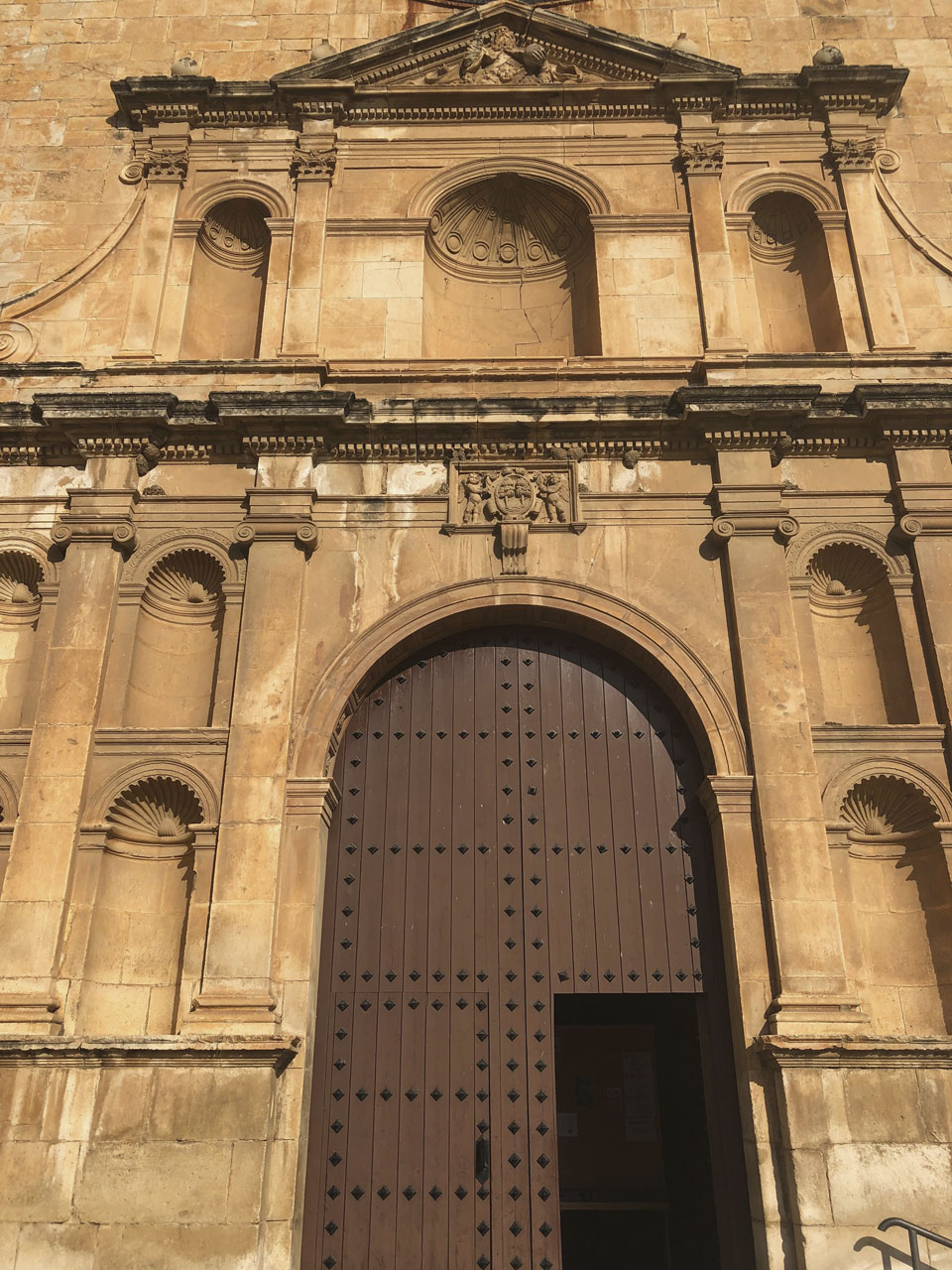 | Panel 9 |
Gaudí and space
“Gothic art is imperfect: it is only half resolved. It is the style of the compass, of the formula of industrial repetition. Its stability is based on the permanent propping up of the buttresses: it is a defective body that can be supported with crutches.”
Antoni Gaudí
The church of Sant Jaume de Riudoms is a key place to understand the work of Gaudí. What did the immensity of this place of worship represent in the eyes of a child such as him? It is a work of extraordinary dimensions for a village like Riudoms. Here Gaudí became aware of space.
This church replaced the old one which is situated right next to it. The foundation stone was laid in 1588 and construction began in 1593. The year 1606 can be seen on the coat of arms on the façade and 1610 around the apse; these dates show the construction period for each part. The church was inaugurated on 26 July 1617, with the sacristy being built in the second phase, from 1686.
The façade of the church that Gaudí saw is a fine example of the Catalan Renaissance. It is presented as an altarpiece with eleven niches and the coat of arms of the town crowned by a frontispiece with a relief representing the Eternal Father. It is to this façade that the collaboration of the architect Pere Blai is attributed.
The interior has a basically Gothic layout and a surprisingly tall nave, formed by six side chapels connected by a band and a polygonal chancel. The ceiling shows the classic ribs of this architectural style. In the Roser chapel, there was a Baroque altarpiece, the work of Lluís Bonifàs the Elder.
The bell tower was not finished until 1877 and the following year the chapel of the Santísimo was built, under the altar where the remains of Blessed Bonaventura Gran rest today. In June 2018, it was declared a Cultural Asset of National Interest.
The Gaudí Family and Riudoms
Francesc Gaudí Salvany, the architect’s grandfather, worked in the Salvany family trade. He was the first coppersmith with the surname Gaudí. He married Rosa Serra Torroja from Reus in 1811 at the age of 38. She was only 25 years old and the marriage lasted 17 years. They lived in the Raval de Sant Francesc. Francesc Gaudí died in 1828 and left “la Calderera” a widow with 7 children and another on the way.





